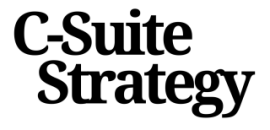
Understanding the current economic landscape
Taking stock of market dynamics
Alright, let's dive in! The first step to lead through economic shifts is understanding market dynamics, and it's not as complicated as it sounds. You've got to keep an eye on various economic indicators and trends.
For instance, according to a report by the International Monetary Fund (IMF), global growth is projected at 4.9% in 2022 (Source: IMF World Economic Outlook, 2021). This gives a general forewarning of the market's trajectory. Combining these with trends from local markets helps provide a fuller picture.
Importance of fiscal policies
Understanding fiscal policies is like knowing the rules of a game. The government's taxation and spending decisions directly affect your business. For example, a study published in the Harvard Business Review (HBR) noted that in times of economic uncertainty, businesses that understood impending tax hikes or stimulus packages adjusted more quickly and sustained growth longer than those that didn't (Source: Harvard Business Review, 2020).
Monitoring consumer behavior
Consumer behavior shifts during uncertain times, and it's a game-changer. A survey by McKinsey & Company found that 75% of consumers tried new shopping behaviors during the COVID-19 pandemic, and many of them are likely to continue with those behaviors (Source: McKinsey & Company, 2021). Knowing how spending habits are evolving helps you align your strategy better.
Many of these insights closely link to broader business strategies. For more detailed tips from top CEOs, check out this article on mastering business strategy.
Effective communication strategies during uncertain times
Building trust through transparency
In unpredictable times, the backbone of an organization's resilience can be its transparency. A survey by Edelman revealed that 63% of employees under 45 expect their employers to update them regularly with honesty, even when the news isn't rosy. One example is how Airbnb navigated its significant layoffs in 2020. CEO Brian Chesky communicated clear reasons and decisions with all stakeholders, maintaining trust through challenging transitions.
Encourage open dialogue
Communication isn't just top-down; it's a dynamic dialogue. Harvard Business Review states that employees who feel heard are 4.6 times more likely to feel empowered. A recent study showed that 70% of employees linked open communication to job performance improvement. Leaders at Google famously use an open-door policy to foster innovation and trust, encouraging employees to voice concerns without fear of repercussion.
Regular updates and feedback loops
Frequent updates can help mitigate the anxiety that comes with economic turbulence. McKinsey & Company found that regular, structured communication during uncertain periods boosts morale by 20%. At Slack, regular 'All Hands' meetings are held where leadership shares updates and takes questions, fostering a sense of unity and clarity. Implementing feedback loops can also be a game-changer. Feedback mechanisms not only provide insights for improvement but also make employees feel valued and heard.
Utilizing tech for seamless communication
Leveraging technology can help maintain robust communication channels. According to Gartner, 54% of companies saw an improvement in communication quality after implementing team collaboration tools. Zoom, Teams, and Slack are crucial platforms that many companies, like Shopify, have successfully used to adapt to remote working conditions, ensuring everyone stays connected regardless of physical location.
For more strategies on navigating economic uncertainties, visit the insights shared in this detailed guide.
Innovative cost management and resource allocation
Finding balance without sacrificing quality
So, you've figured out the current economic landscape and you're nailing communication strategies. But now comes the part that makes or breaks many organizations: innovative cost management and resource allocation. This ain't about penny-pinching. It's about making smart decisions that keep the business running efficiently without cutting corners.
Automation: your new best friend
We're deep into the era of automation, and it's high time you put it to work. McKinsey reports that around 45% of paid activities can be automated by adapting current technology. Imagine what your team can achieve when they're not bogged down with repetitive tasks. Freeing up resources can mean more innovation and creativity flowing into your projects. Let's not forget, automating routine processes can save big bucks in the long run.
Review and renegotiate contracts
When was the last time you reviewed your vendor contracts? If it feels like ages, you're not alone. But it's time to dig them out. According to a study by The Hackett Group, companies can save up to 20% of their costs by renegotiating contracts and consolidating suppliers. You might find that there are better deals out there, or perhaps you can leverage your long-term relationship for more favorable terms.
Embrace flexible workforce options
The gig economy is booming, and it's for a reason. Tapping into freelance talent can provide flexibility and cost savings. According to Upwork’s report, over 36% of the US workforce is freelancing in some capacity. This isn't about replacing your full-time team but supplementing it with talent that can take on specialized tasks as needed, without the overhead cost of full-time hires.
Energy efficiency is key
Cutting energy costs may seem small, but they add up. The Department of Energy states that you're looking at an average 20% savings potential using strategic energy management practices. Invest in energy-efficient equipment, switch to LED lighting, or explore renewable energy options. Not only will this reduce costs, but it's also a great way to boost your company’s green credentials.
These steps might seem like just another set of hurdles in the grand scheme of economic uncertainty, but think of them as smart play moves. You don't have to sacrifice quality or morale to save money. Balance is the key, and with a carefully laid-out plan, you'll be navigating through these turbulent waters like a seasoned pro.
Happy to dive more into why CFOs could be your game-changer in these strategies, then check out why CFOs are the unsung heroes of strategic business growth.

-large-full.webp)










-large-teaser.webp)

